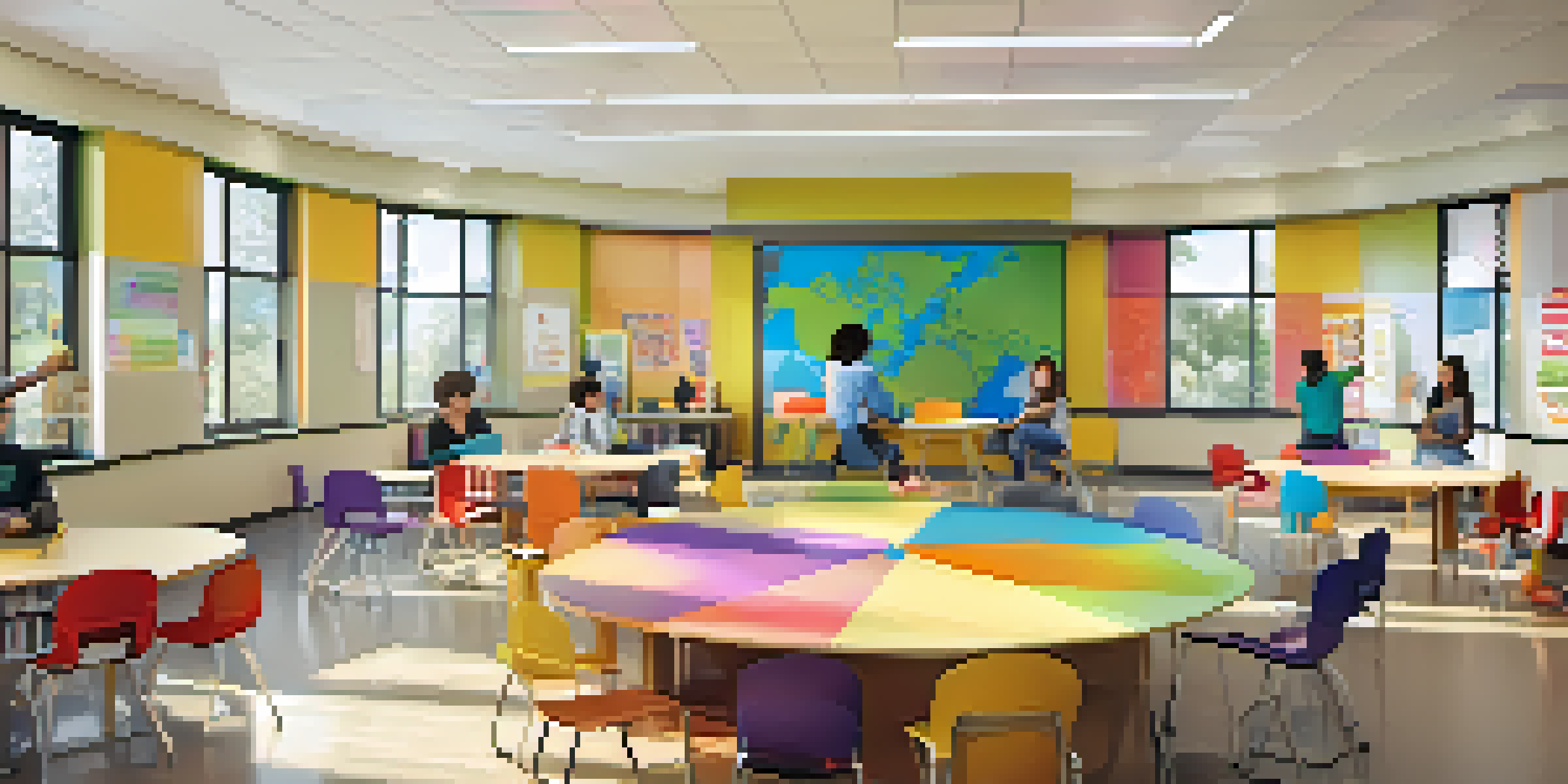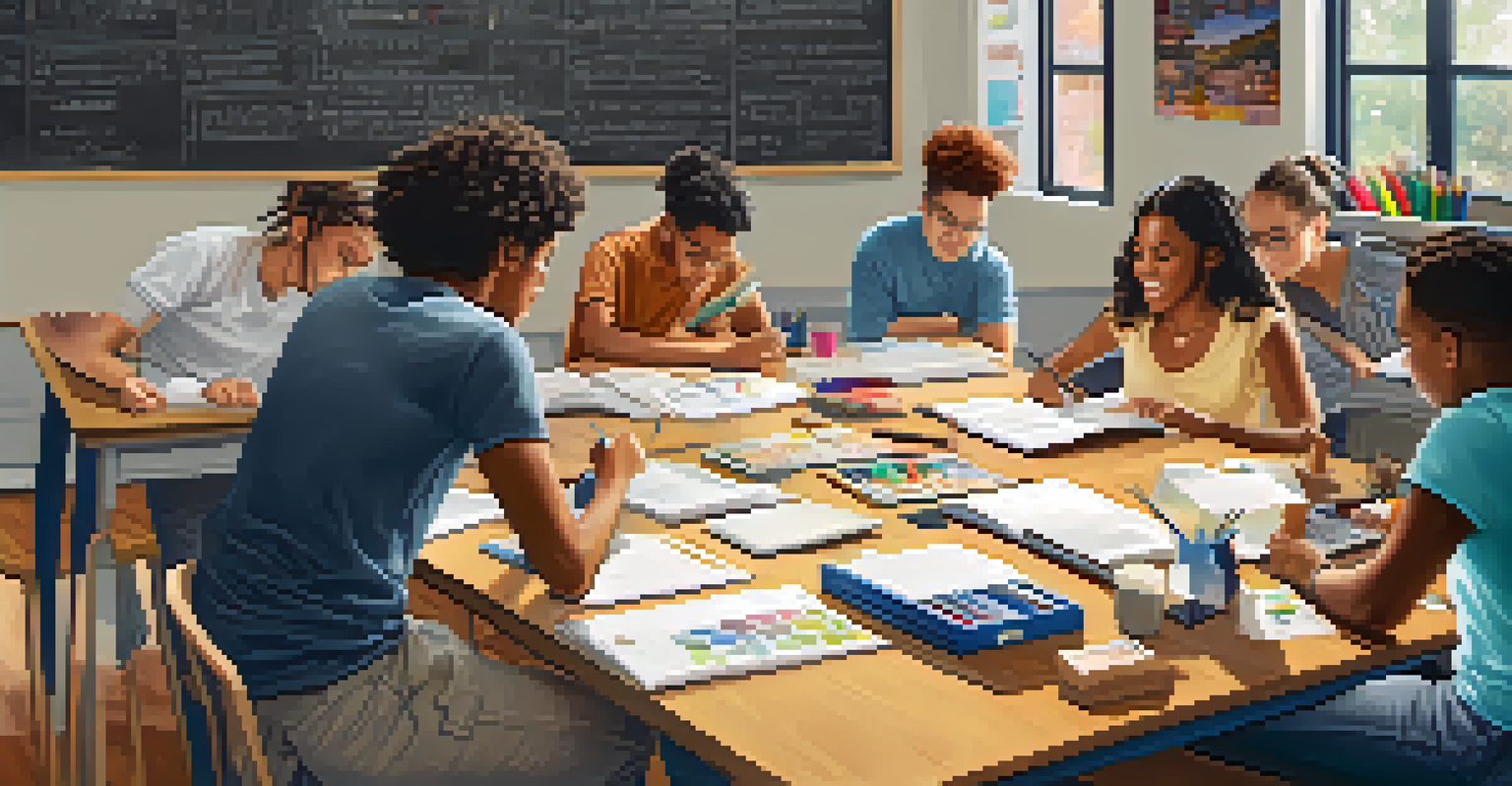Creating Collaborative Learning Environments in Classrooms

Understanding the Importance of Collaborative Learning
Collaborative learning is more than just working together; it's about creating a community where students learn from each other. When students collaborate, they develop critical thinking skills, improve communication, and gain diverse perspectives. This approach mimics real-world situations, preparing students for teamwork in their future careers.
Alone we can do so little; together we can do so much.
Think of a classroom as a garden where each student is a unique flower. Just as flowers need sunlight and water to thrive, students need interactions and discussions with their peers to flourish academically. By embracing collaborative learning, educators can cultivate a rich educational environment that nurtures creativity and innovation.
Moreover, collaborative learning can help reduce social isolation among students. By engaging in group activities, students build relationships, learn to respect differing opinions, and develop empathy—skills that are invaluable both inside and outside the classroom.
Designing the Classroom for Collaboration
The physical layout of a classroom plays a crucial role in fostering collaboration. Traditional rows of desks can stifle interaction, whereas circular or cluster seating arrangements encourage students to engage with one another. Consider creating flexible spaces that can be easily reconfigured for group activities, discussions, or presentations.

Additionally, incorporating technology can enhance collaborative experiences. Tools like interactive whiteboards, online discussion forums, and collaborative software allow students to share ideas and resources seamlessly. This not only makes the learning process more dynamic but also prepares students for a tech-driven world.
Finally, don’t forget to decorate the classroom with student work and collaborative projects. This not only showcases their achievements but also creates a sense of ownership and belonging, motivating students to contribute actively to their learning environment.
Establishing Clear Goals and Roles
For collaboration to be effective, it’s essential to set clear goals for group activities. Each student should understand what they are working towards and how their contributions fit into the bigger picture. This clarity helps keep everyone focused and ensures that all voices are heard.
Collaboration allows us to know more than we are capable of knowing by ourselves.
Assigning specific roles within groups can also enhance accountability. For instance, designating a leader, scribe, or researcher allows students to take ownership of their responsibilities while learning to rely on one another. This not only promotes teamwork but also helps students develop leadership skills.
Moreover, periodically rotating roles within groups can expose students to various perspectives and responsibilities, enriching their collaborative experience. It encourages them to step out of their comfort zones and fosters adaptability—an essential skill in any team setting.
Encouraging Open Communication and Feedback
Effective communication is the backbone of any collaborative effort. Encourage students to express their ideas, ask questions, and provide constructive feedback to their peers. This creates a culture of openness, where students feel valued and understood, which can significantly enhance their learning experience.
Incorporating regular check-ins during group work can help facilitate this communication. For instance, asking groups to share their progress and challenges fosters a sense of community and allows for timely interventions if needed. This practice not only keeps the groups on track but also strengthens their problem-solving abilities.
Additionally, teaching students how to give and receive feedback can empower them further. By understanding that feedback is a tool for growth rather than criticism, students are more likely to engage in meaningful discussions and collaborate effectively.
Incorporating Diverse Learning Styles
Every student brings a unique set of skills and learning styles to the table, making diversity a powerful asset in collaborative learning. Recognizing and embracing these differences can help create a more inclusive and effective learning environment. For instance, some students may thrive in discussions, while others excel at written communication or visual presentations.
To accommodate various learning styles, consider offering diverse collaborative tasks. Group projects can range from creating presentations to conducting experiments or developing artistic projects. This variety not only keeps students engaged but also allows them to showcase their strengths while learning from their peers’ talents.
Ultimately, by valuing diversity in learning styles, educators can foster respect and appreciation among students. This collaborative approach not only enhances individual learning but also prepares students for a globalized world where teamwork across cultures and abilities is essential.
Assessing Collaborative Efforts
Assessment in collaborative learning should reflect both individual contributions and group dynamics. It's crucial to develop criteria that evaluate how well students worked together, communicated, and achieved their goals as a team. This holistic assessment approach encourages students to take their collaboration seriously.
One effective method is to use self and peer assessments, where students reflect on their own contributions and evaluate their peers. This practice fosters accountability, encourages reflection, and helps students recognize the value of their collaboration.
Additionally, consider incorporating project presentations as part of the assessment process. Allowing groups to showcase their work not only celebrates their achievements but also provides an opportunity for constructive feedback from peers and educators, reinforcing the collaborative spirit.
Creating a Culture of Collaboration
Building a collaborative learning environment is not a one-time effort; it requires a sustained commitment to fostering a culture of collaboration. This starts with educators modeling collaborative behaviors themselves. By demonstrating teamwork in their interactions and planning, teachers set a powerful example for students to follow.
Encouraging collaboration beyond the classroom can further reinforce this culture. Organizing school-wide projects or community service activities allows students to work together in diverse settings, enhancing their collaborative skills and sense of community.

Finally, celebrating collaborative successes—big and small—can motivate students to engage in teamwork. Recognizing achievements, whether through awards or simple acknowledgments, fosters pride in collaborative efforts and inspires students to continue working together.